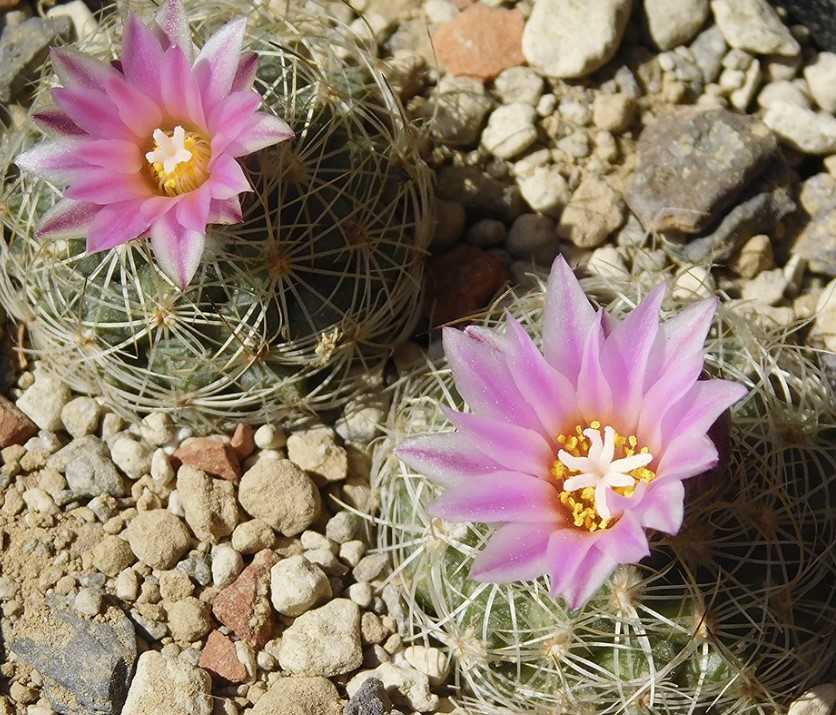Family: Turbinicarpus knuthianus is a species of the family Cactaceae.
Altitude: About 1,700 meters above sea level.
Scientific Name: Turbinicarpus knuthianus (Boedeker) V. John & Riha 1983
Habitat: These lovely plants are usually found solitary in the hot desert or partly clumping from the base. It is a slightly depressed globose, bluish-green, 3-6 cm (1.2–2.4 inches) high and 3.5-7 cm (1.4–2.8 inches) in diameter. thrives in warm steppes, open meadows, and semi-desert areas with calcareous soil dotted with juniper and pinion trees.
Propagation: Turbinicarpus knuthianus is propagated by both seeds and cuttings. Keep in mind that the young seedlings need to be watered fairly carefully and grow into adult plants over a period of years.
Ribs/Tubercles conical: About 5-7 mm (0.2–0.3 inches) high.
Central spines: 1-2, white, curving slightly upward, 10–16 mm (0.4–0.6 inches) long.
Radial spines: 15-20, white, radiating, slender, straight, 6–8 mm (0.2–0.3 inches) long.
Areoles: Longish wooly
Flowers: They have pink and light magenta blooms with darker midribs, 2.3–2.8 cm (0.9–1.1 inches) long, and 1.8–2.5 cm (0.7–1 inches) in diameter.
Flowering Months: The flowers bloom from early January to March.
Cultivation: A comparatively easy plant grows quickly. The basic requirement is well-drained soil. It needs strong to part-sun light to develop good spinal growth, and it needs sparing watering to keep the plant compact and avoid it from growing too long and looking unnatural.
Fruits: The fruits are yellowish green, nearly round, 7-9 mm (0.3–0.4 inches) long, and 7-8 mm (0.3 inches) in diameter.
Distribution: Found near Guadalcazar, San Luis Potosi, Mexico. All species of Turbinicarpus are listed in Appendix I of CITES.
Winter Care: It can withstand temperatures as low as -4°C for brief periods in the winter, so make sure it is well-ventilated and kept dry.
Synonyms: Echinocactus knuthianus Boedeker 1930; Thelocactus knuthianus (Boedeker) Borg 1937; Gymnocactus knuthianus (Boedeker) Backeberg 1951; Neolloydia knuthiana (Boedeker) E. F. Anderson 1986; and Pediocactus knuthianus (Boedeker) Halda 1998.
Read More: Matucana krahnii: Stunning little clustering cactus








